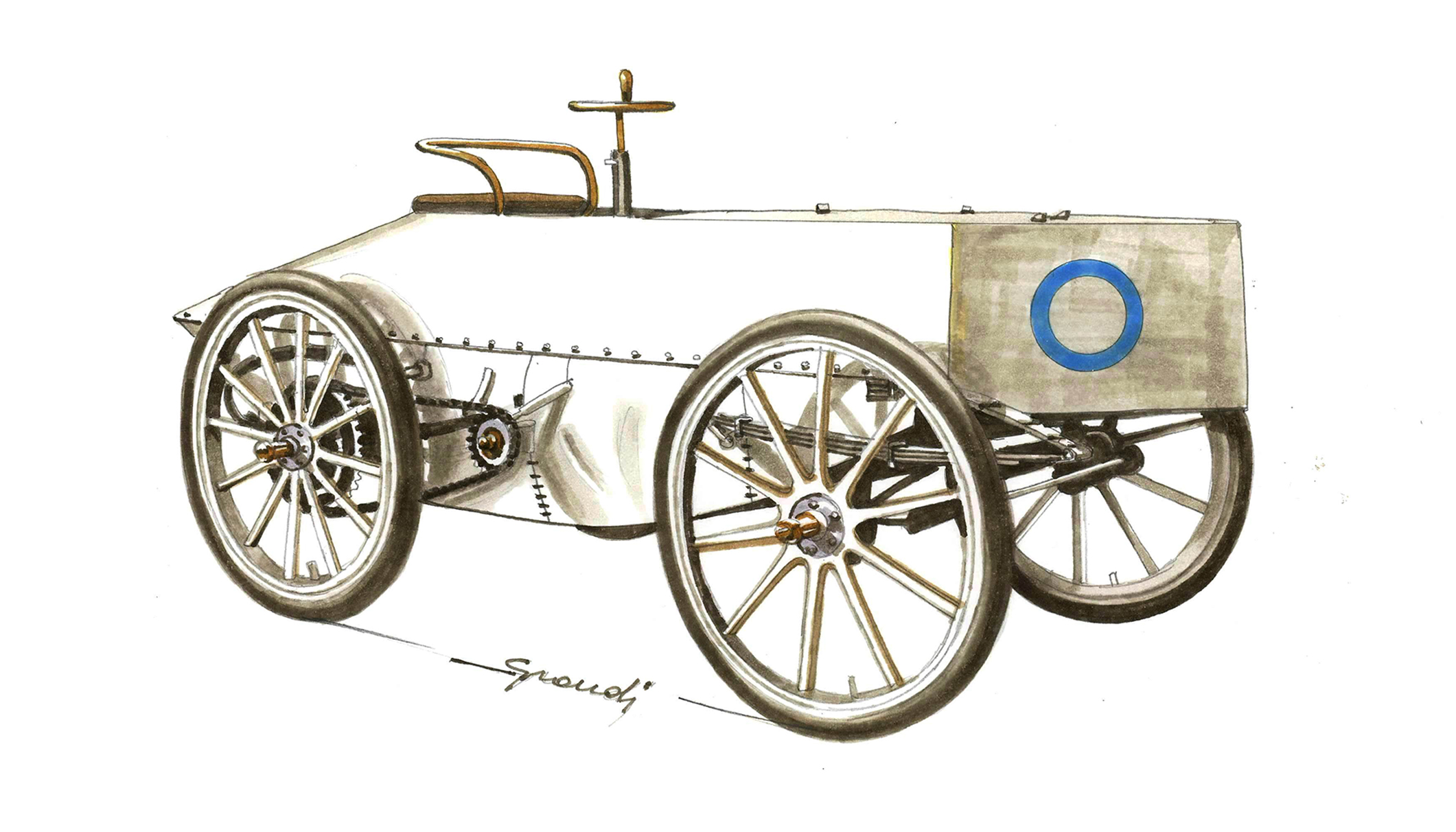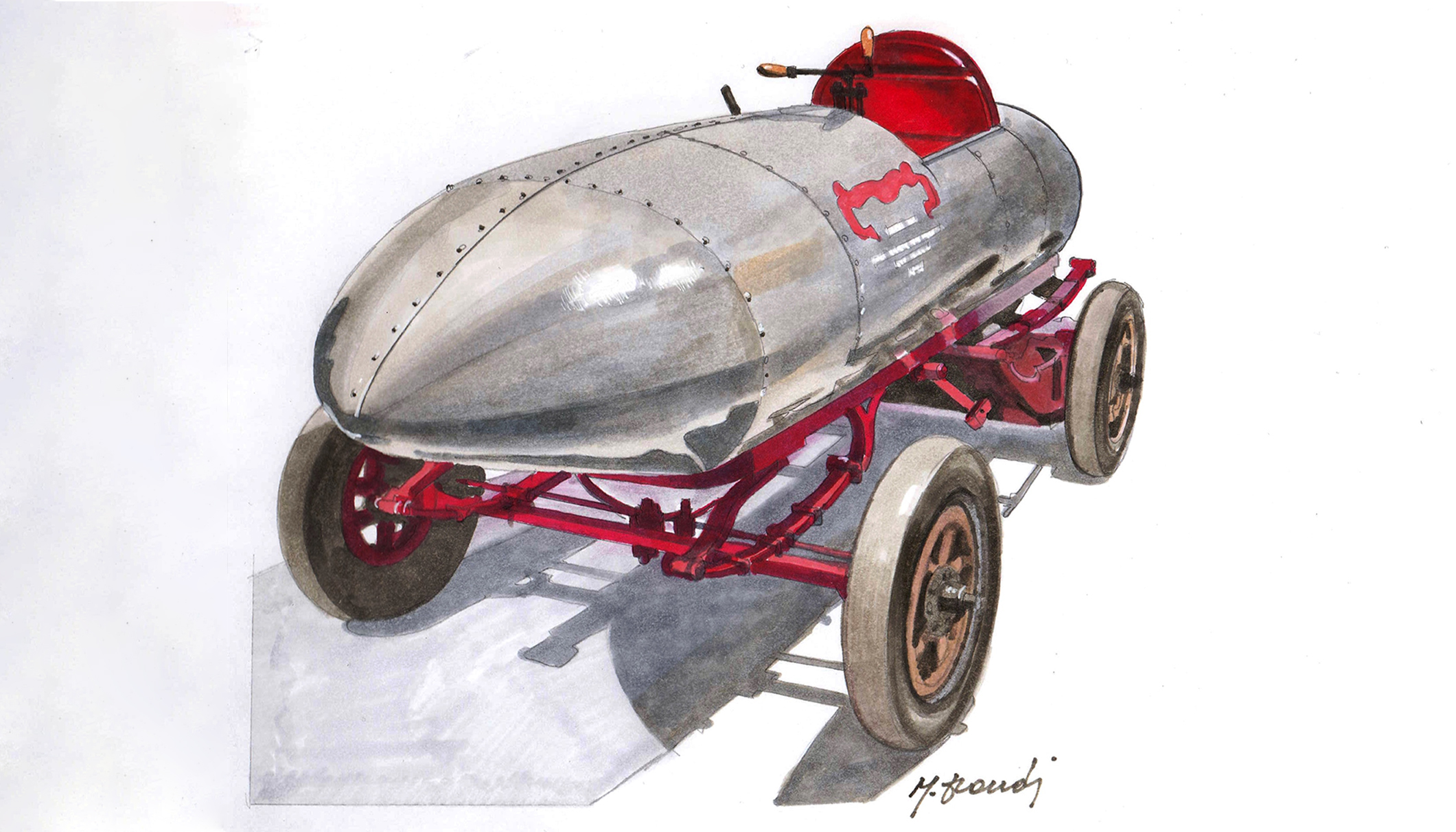The Speed Record Story
1 – 1899. Breaking the 100 km/h barrier
With the valuable support, depth of knowledge and illustrative talent of Prof. Massimo Grandi
Photo credit: Massimo Grandi
It is by no means a surprise to hear that the one thing everyone wanted to know about the newly-invented car was how fast it could go. The debate about speed had already commenced with trains some fifty years earlier. Among the many themes that concerned them back then, the theory that speed could actually damage our health had already been disproven: already in 1848 a steam locomotive called the American Antelope, had reached 96.6 km per hour without any particular side effects.

Indeed, with the experimentation of flight with the “heavier-than-air machine” by the Wright brothers, man now had the desire to achieve goals that were simply unthinkable only a few years earlier. The first vehicles to attempt to break a seemingly impossible limit, the 100 km/h barrier, drew their battleground in Paris. At the end of the 1800s, among the various propulsion systems, electric prevailed sharply over steam, while internal combustion engines were still very underpowered compared to other more popular alternatives.

The Speed Record gauntlet was launched by the motoring journal “La France automobile” Indeed, in a world in which cars were so rare they were viewed with curiosity and very often with surprise, there was already a journal that documented its progress and indeed promoted it. The year was 1899 and among the contenders for the coveted title of driver of the world’s fastest vehicle, two stood out in particular. They were the French Count Gaston de Chasseloup-Laubat and the Belgian Camille Jenatzy. In their first meeting at the start of the year in January, it was the Frenchman who prevailed, reaching 70 km/h, leaving the 100 km/h average speed over one kilometre barrier apparently insurmountable.

The rematch came soon enough though. This time it was the Belgian Camille Jenatzy who managed an average speed of 80 km/h over the kilometre distance.
This sort of Americas Cup-style match race repeated itself in March with Chasseloup-Laubat driving his Jeantaud Aerodinamica, which had a front section similar to the bow of a boat and the perfectly tapered back rear, allowing it to gain another 10 km/h, reaching 92.783 km/h.
Camille Jenatzy, who just like de Chasseloup-Laubat had a car powered by a single electric motor, driven by the confidence that his cars were already sold on the market, decided to create a special vehicle, with two electric motors driving both rear wheels. The bullet-shaped car raced again on 29th April 1899. And achieved what was impossible just a few months earlier: 106.882 km/h over a kilometre. The car, named The Never Satisfied – “Jamais Contente” – in French, had achieved its goal, creating, however, the conditions for yet more goals.

Just two years later, in Nice, on the Promenade des Anglais, another car manufacturer, Leon Serpollet, accepted the challenge with his car that had been specially prepared for the record with an aerodynamic shape that gave it its name, “Oeuf de Pâques” – Easter Egg. The 1,590cc, steam engine far exceeded the power of two of Jamais Contente electric motors: 102 horsepower compared to a total of 68. And the result, it didn’t take them long to break the record which now stood at: 120.805 km/h. In addition to the power, due to the use of oil to generate steam, his Gardner Serpollet had the advantage of lower weight by not having to carry tens of kilos of batteries on board.

The story has only just begun… as we await the next instalment, I’d like to mention an interesting fact: during this same period motorcycles also set their own, highly-respectable speed recordS: Glenn Curtis, with his V-2, reached a speed of 103 km/h for one mile (1.6 km). There will be many surprises along the way…
